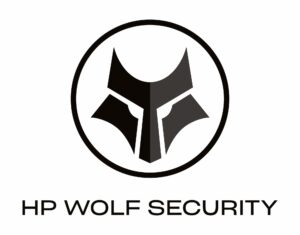
Einfaches hybrides Arbeiten: Der Schlüssel zur Mitarbeiterbindung
12 February 2024
Apogee Corporation wird akkreditierter Lieferant des Charities Buying Group Framework
20 February 2024
Sie wollen mehr Datensicherheit? Investieren Sie in ein reibungsloseres hybrides Arbeiten
Obwohl eine hohe Mitarbeiterzufriedenheit ein Vorteil des hybriden Arbeitens ist, zögern viele CIOs noch immer, in Tools zur Erleichterung der digitalen Zusammenarbeit zu investieren - obwohl diese Technologie es ihnen auch ermöglichen würde, hartnäckige Probleme mit der Datensicherheit anzugehen.
Hybrides Arbeiten mag für Unternehmen schnell alltäglich geworden sein, aber aktuelle Untersuchungen zeigen, dass die effektive Integration dieser Arbeitsform immer noch hinterherhinkt. Dies hat jedoch keine technischen Gründe, sondern eine wachsende Kluft zwischen CIOs und ihren Mitarbeitern, die zumindest zum Teil auf Misstrauen zurückzuführen ist.
In einer Stichprobe mit 200 CIOs und 200 Mitarbeitern aus KMUs und dem öffentlichen Sektor herrscht nahezu Einigkeit darüber, dass Mitarbeiter weniger produktiv sind, wenn sie aus der Ferne arbeiten (94 % der Mitarbeiter und 98 % der CIOs). Während jedoch 35 % der Mitarbeiter angeben, dass diese mangelnde Produktivität auf unzureichende, langsame oder unzuverlässige Technologie zurückzuführen ist, würden 27 % der CIOs dies eher auf Ablenkungen zu Hause zurückführen.

Doch während viele jüngere CIOs sich auf die Seite ihrer Mitarbeiter zu stellen scheinen, wird das Problem durch das Misstrauen älterer CIOs noch verschärft. Indem sie möglicherweise berechtigte Bedenken der Mitarbeiter mit der neuesten Modeerscheinung verwechseln, riskieren CIOs, wertvolle Talente zu verlieren.
Auf die Frage, was sie am meisten brauchen, um ihre Arbeit im Homeoffice bestmöglich zu erledigen, antworteten 37% der Mitarbeiter: "einen Vorgesetzten, der ihnen zutraut, flexibel und produktiv zu arbeiten" - was besonders häufig bei Mitarbeitern der Generation Z (42%) der Fall war. Die mangelnde Bereitschaft der CIOs, in die digitale Zusammenarbeit zu investieren, führt jedoch dazu, dass 28 % der Mitarbeiter berichten, dass sie ihre Arbeit nicht richtig erledigen können und Gefühle der Frustration (29 %) und Isolation (28 %) erleben.
Beunruhigenderweise ist die Entfremdung jüngerer Talente nicht das Einzige, was CIOs der Generation X riskieren, wenn sie zu wenig in die digitale Zusammenarbeit investieren - denn dadurch wird auch die Datensicherheit gefährdet, ein Bereich, mit dem viele ältere CIOs Berichten zufolge bereits zu kämpfen haben.
Das Problem der Cybersicherheit
Cybersicherheit wird im digitalen Zeitalter immer ein Thema sein, und hybrides Arbeiten hat die Dinge nur noch komplizierter gemacht. 24% der CIOs in unserer Stichprobe sind der Meinung, dass dies das Haupthindernis für eine funktionale Arbeitsplatzflexibilität ist. Besorgniserregend ist, dass nur 2 % der CIOs der Generation X sagen, sie seien optimistisch, was die Zukunft der Arbeit angeht. Das ist nicht überraschend, wenn man bedenkt, dass 29 % der CIOs der Generation X über die Sicherheitsprobleme besorgt sind, die mit dem hybriden Arbeiten einhergehen.
Das bedeutet, dass Hacker die Qual der Wahl haben, wenn sie einen Zugang zu Heimroutern und damit zu ungeschützten Unternehmensnetzwerken suchen, die mit diesen verbunden sind.

Darüber hinaus gaben 76% der CIOs in unserer Stichprobe zu, dass sie nicht sehr zuversichtlich sind, was ihre Fähigkeit angeht, Mitarbeiterdaten transparent und sicher zu erfassen, zu nutzen oder zu speichern - und 26% glauben, dass die Sicherheitsrisiken der hybriden Arbeit das größte Hindernis für Arbeitgeber in den nächsten 1-2 Jahren sein werden. Umgekehrt scheint die Datensicherheit für CIOs, die in die Altersgruppe der jungen Millennials fallen, ein viel sichereres Terrain zu sein - fast drei Viertel (74%) gaben an, dass sie in diesem Bereich zuversichtlich sind; ein Hinweis darauf, dass die Bewältigung moderner Herausforderungen die Bereitschaft erfordert, sich mit modernen Technologien auseinanderzusetzen.
Wie können CIOs also die Kluft zwischen den Generationen überbrücken, einen Weg finden, der ein einfaches und kosteneffizientes hybrides Arbeiten ermöglicht, und gleichzeitig sicherstellen, dass die Netzwerke ihres Unternehmens angemessen vor Cyberkriminalität geschützt sind?
Ausstattung des digitalen Arbeitsplatzes
Die gute Nachricht ist, dass sich Tools für die digitale Zusammenarbeit sicher und kostengünstig in Ihr Unternehmen integrieren lassen. Indem Sie die Erfahrung der Generation X mit der Innovationsbereitschaft der Generation Y kombinieren, können Sie nicht nur Ihre Datensicherheitsmaßnahmen verstärken, sondern auch eine nahtlose Kommunikation zwischen Ihren Büro- und Hybridteams ermöglichen. So erhalten Sie das Beste aus allen Welten und schaffen die Voraussetzungen für eine höhere Produktivität, zufriedenere Mitarbeiter und eine unvergleichliche Geschäftskontinuität.
Um sicherzustellen, dass Ihr Unternehmensnetzwerk vor Cyber-Bedrohungen geschützt ist - insbesondere vor solchen, die von Heimroutern ausgehen - ist Ihre erste Anlaufstelle eine Endpunkt-Sicherheitslösung, die Isolationstechnologie beinhaltet. Die Isolationstechnologie ist für jedes Unternehmen von entscheidender Bedeutung. Sie stellt sicher, dass alle Dateien und Anwendungen in separaten, sicheren virtuellen Bereichen geöffnet werden, so dass Malware vollständig eingeschlossen ist und nicht auf andere Dateien oder Systeme zugreifen kann.

Sobald diese Voraussetzungen erfüllt sind, können Sie effektive Tools für die digitale Zusammenarbeit in Ihrem Unternehmen einführen. Das kann ein Informationsmanagementsystem sein, mit dem autorisierte Mitarbeiter Dateien von einem sicheren Server aus gemeinsam nutzen und darauf zugreifen können, eine Software zur Prozessautomatisierung, die Ihre Mitarbeiter entlastet, indem sie lästige digitale Aufgaben erledigt, oder ein Service für die Ausstattung von Besprechungsräumen, der eine klarere Kommunikation zwischen Ihren Mitarbeitern im Büro und an anderen Standorten ermöglicht.
Mit diesen Tools sind Ihre Mitarbeiter nicht mehr an die räumliche Entfernung gebunden und können produktiver denn je arbeiten, ohne dass die Sicherheit Ihres Unternehmens darunter leidet.
Für weitere Informationen laden Sie das eBook unten herunter.















































 Chief Information Officer
Chief Information Officer Chief People Officer
Chief People Officer Leiter der Finanzabteilung
Leiter der Finanzabteilung VP für laufendes Geschäft und Dienstleistungsumsatz
VP für laufendes Geschäft und Dienstleistungsumsatz